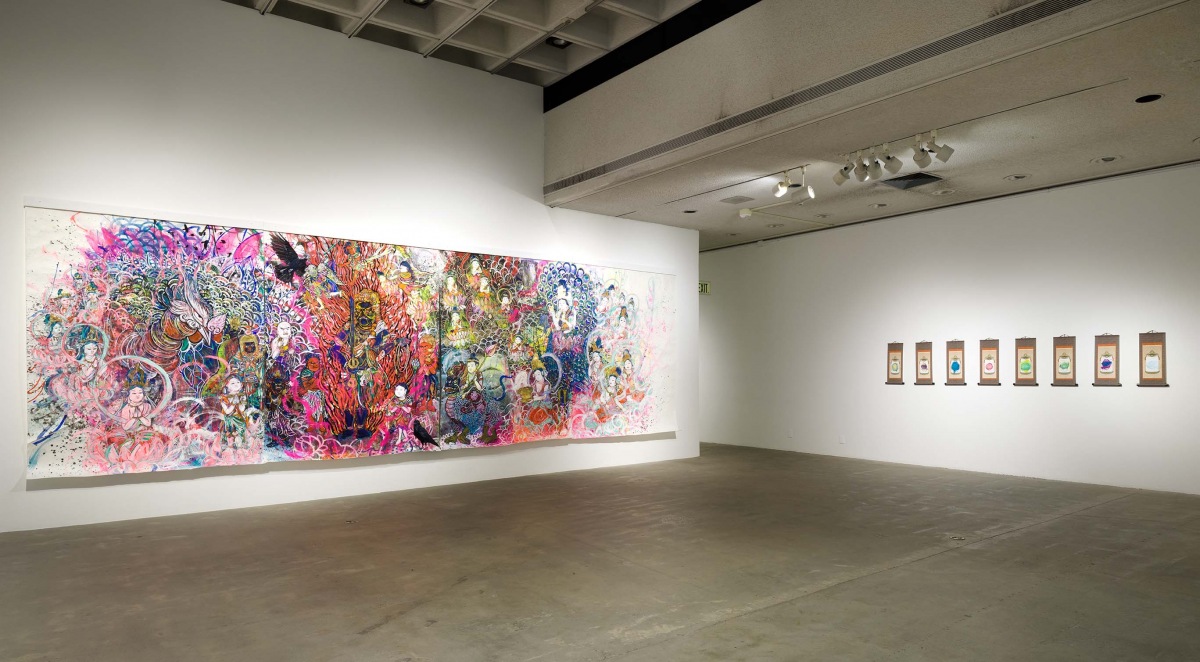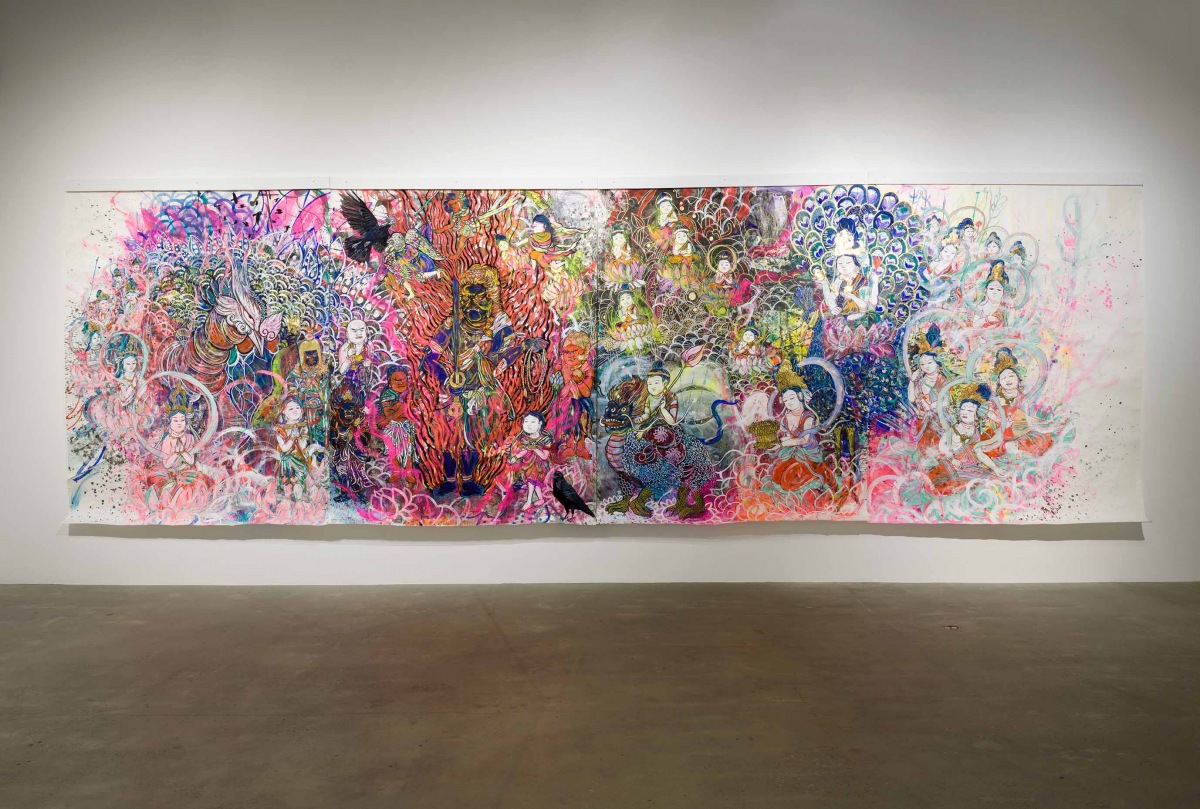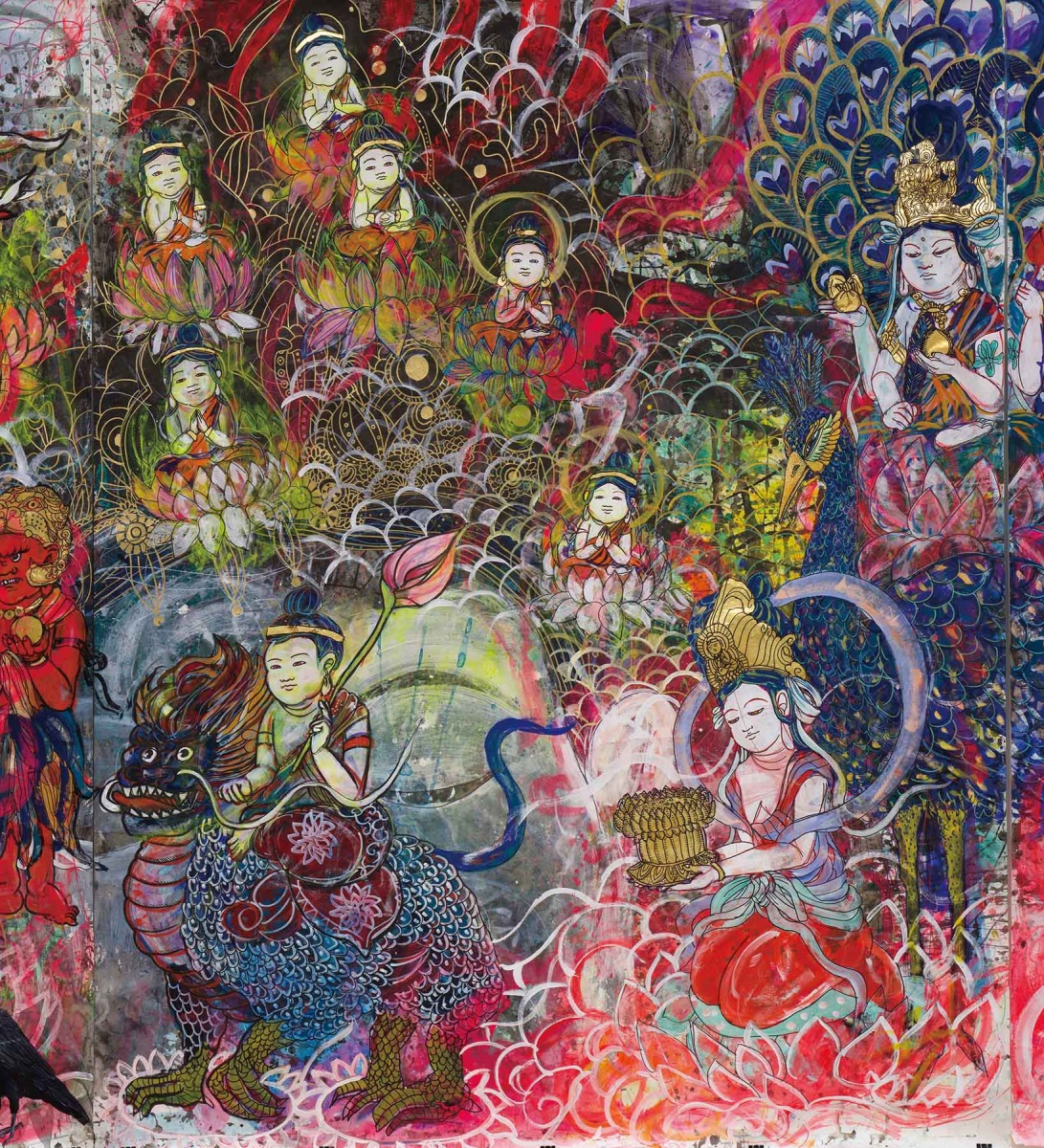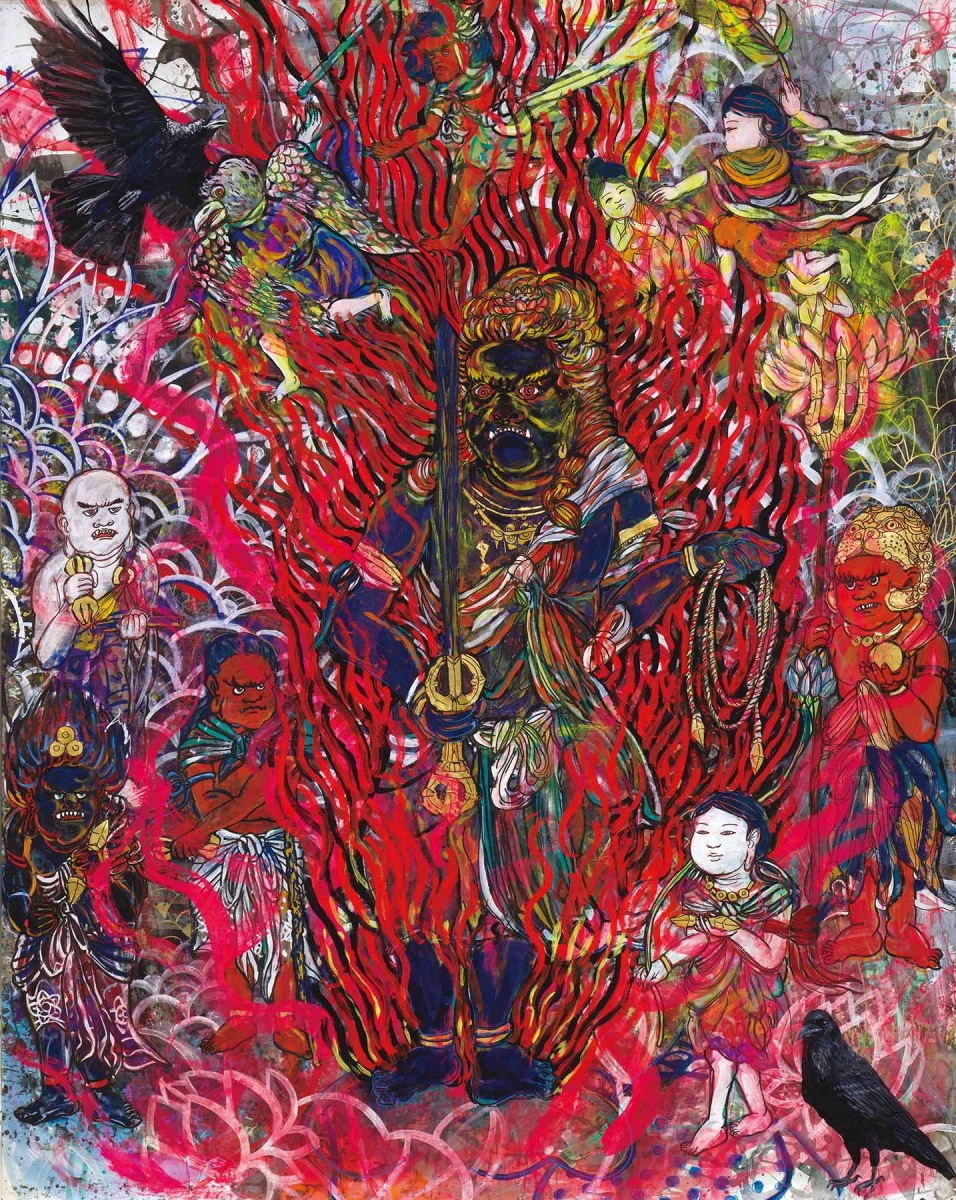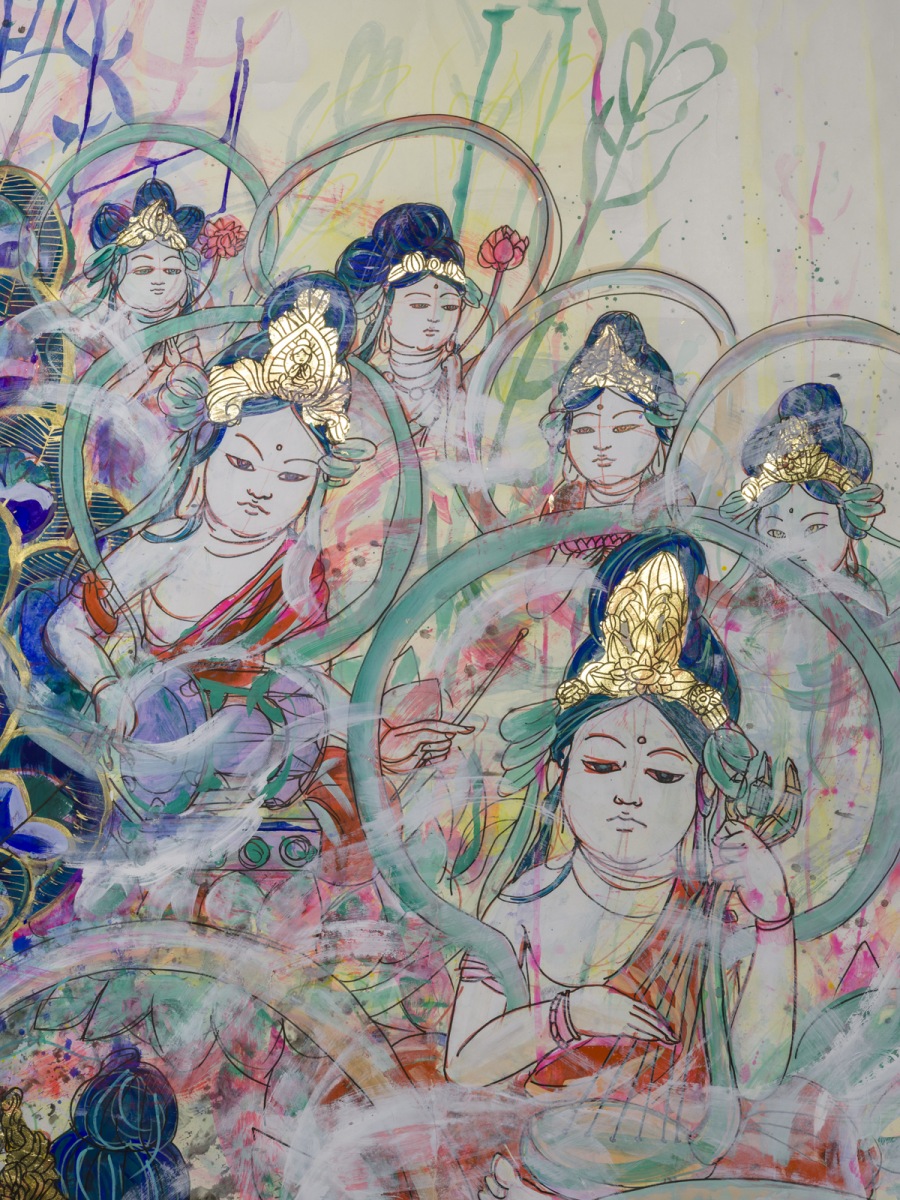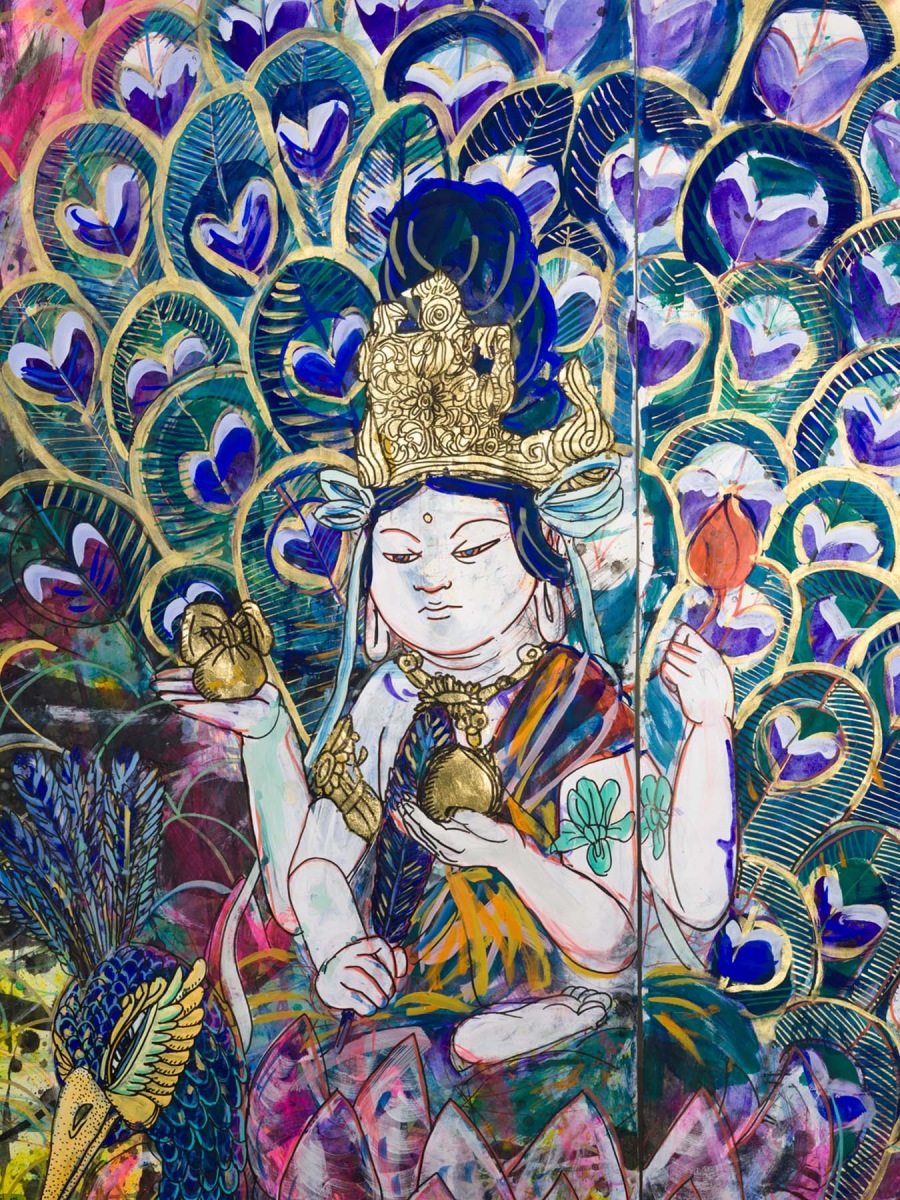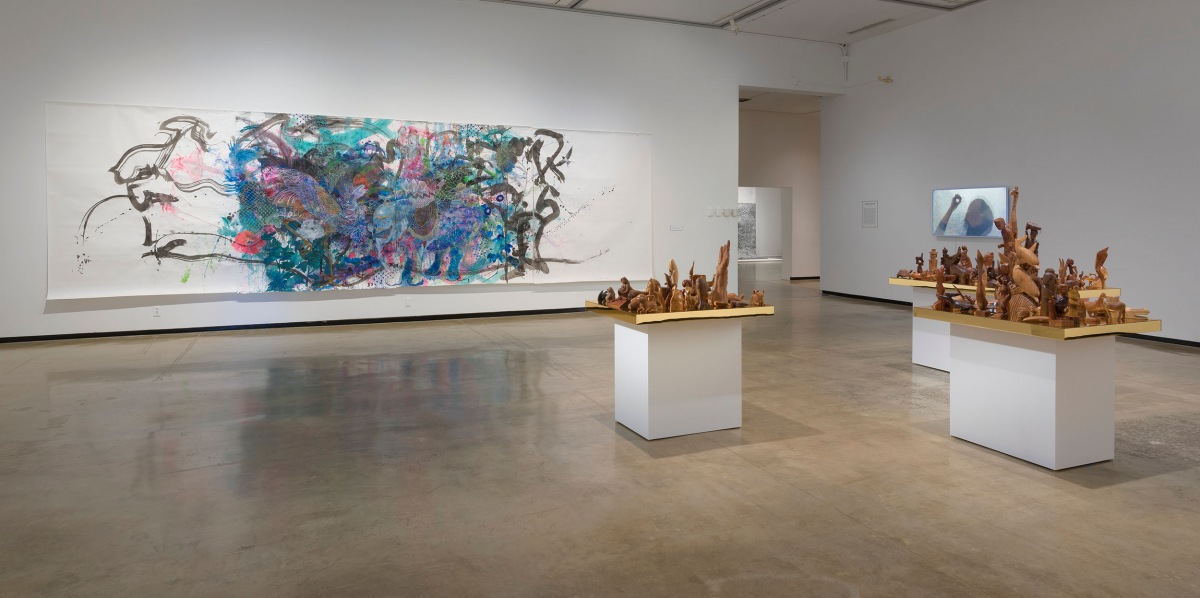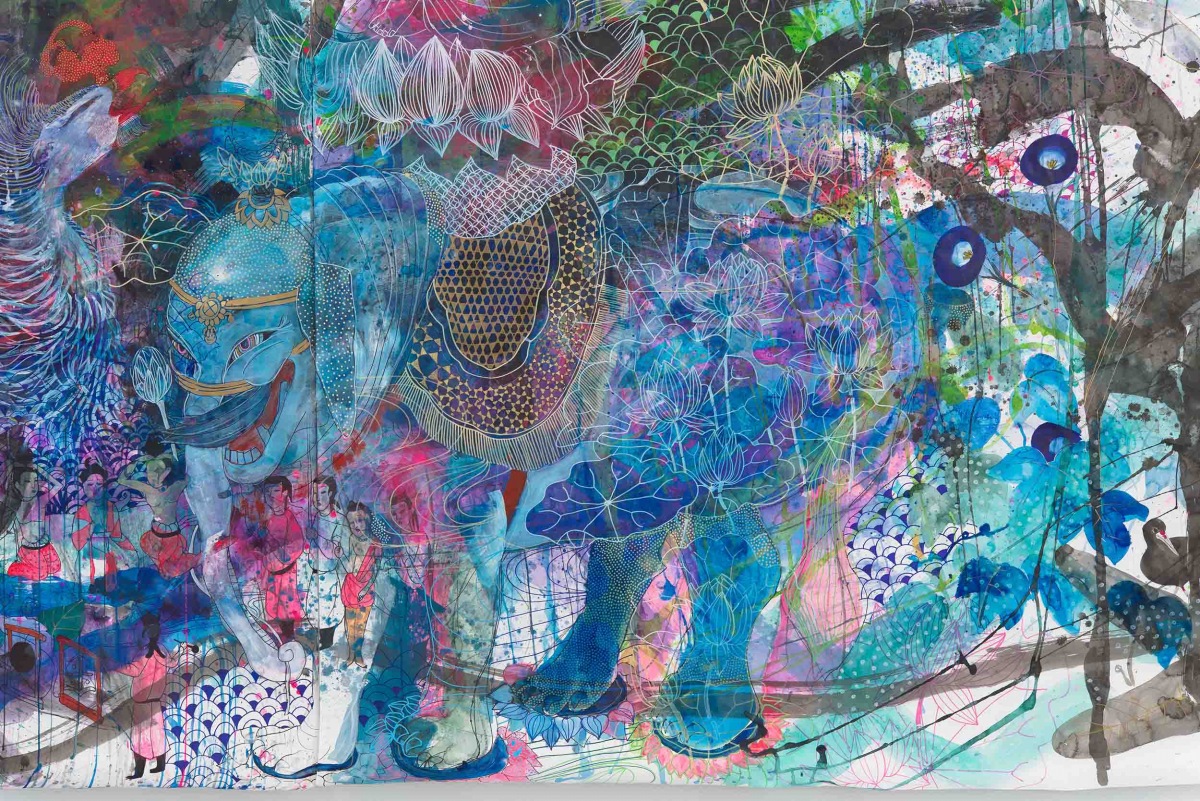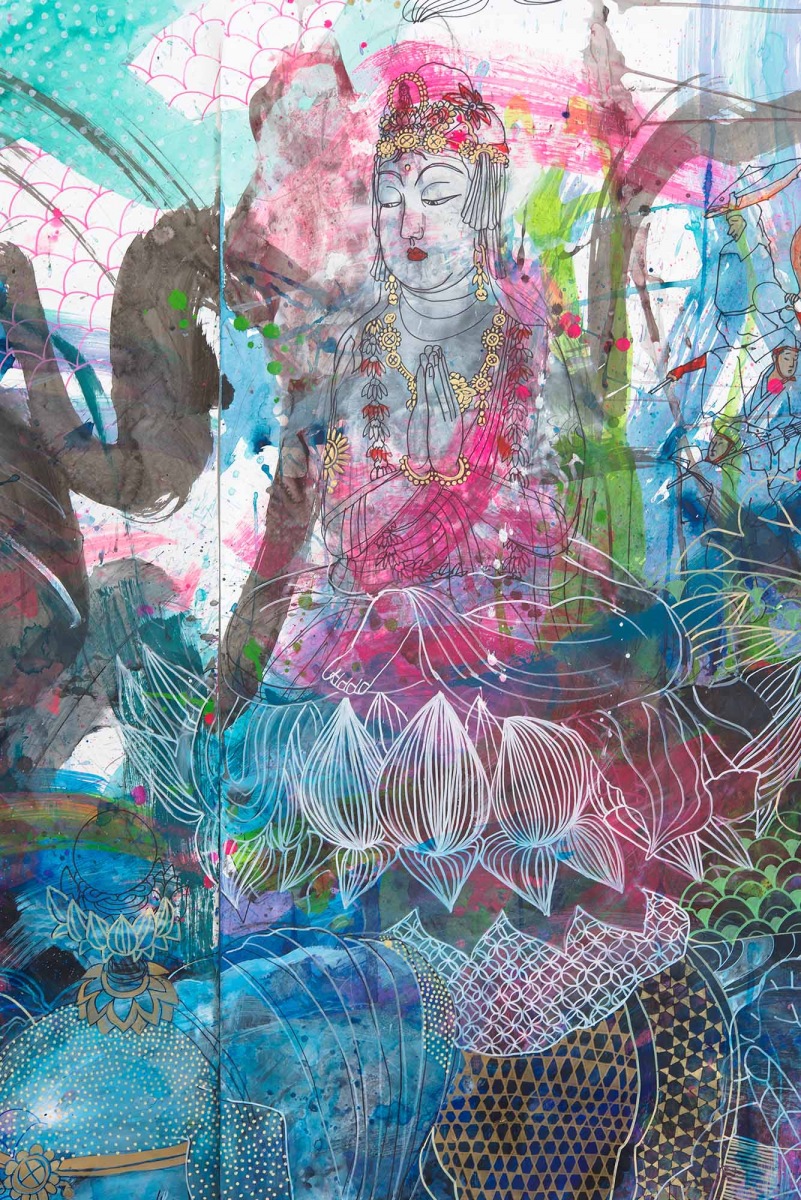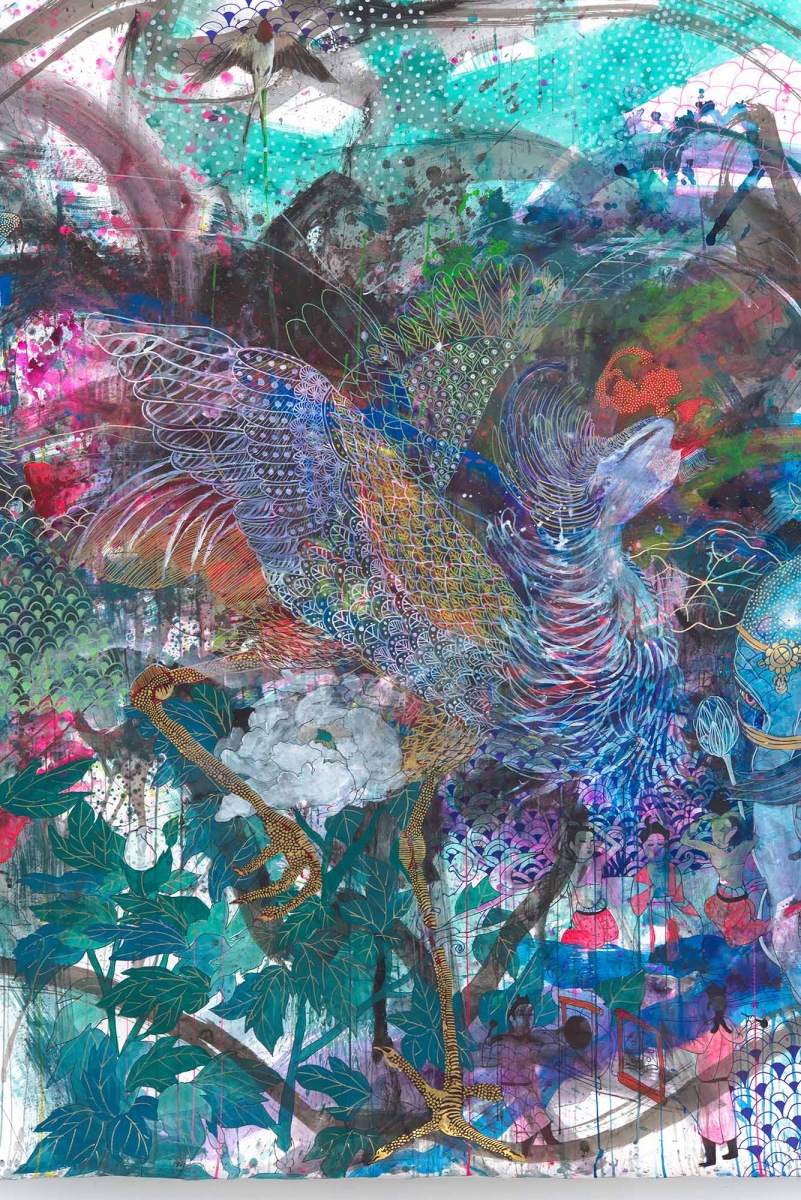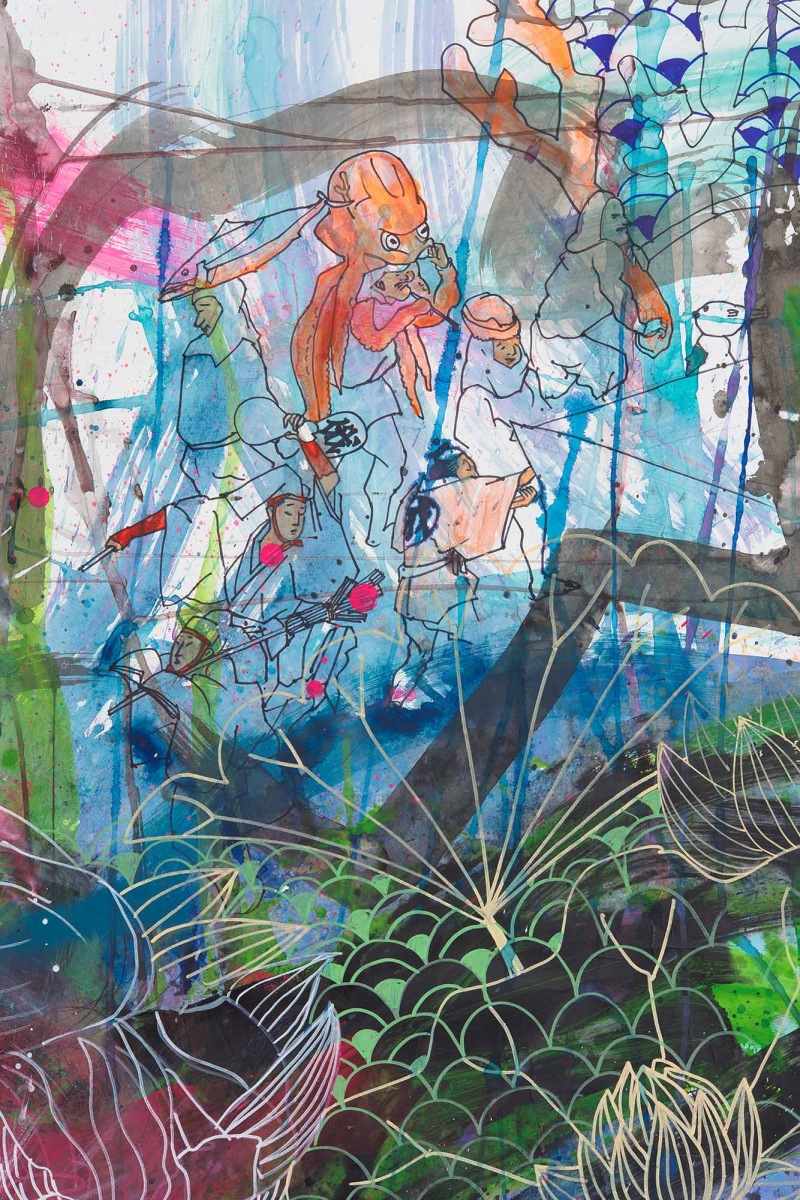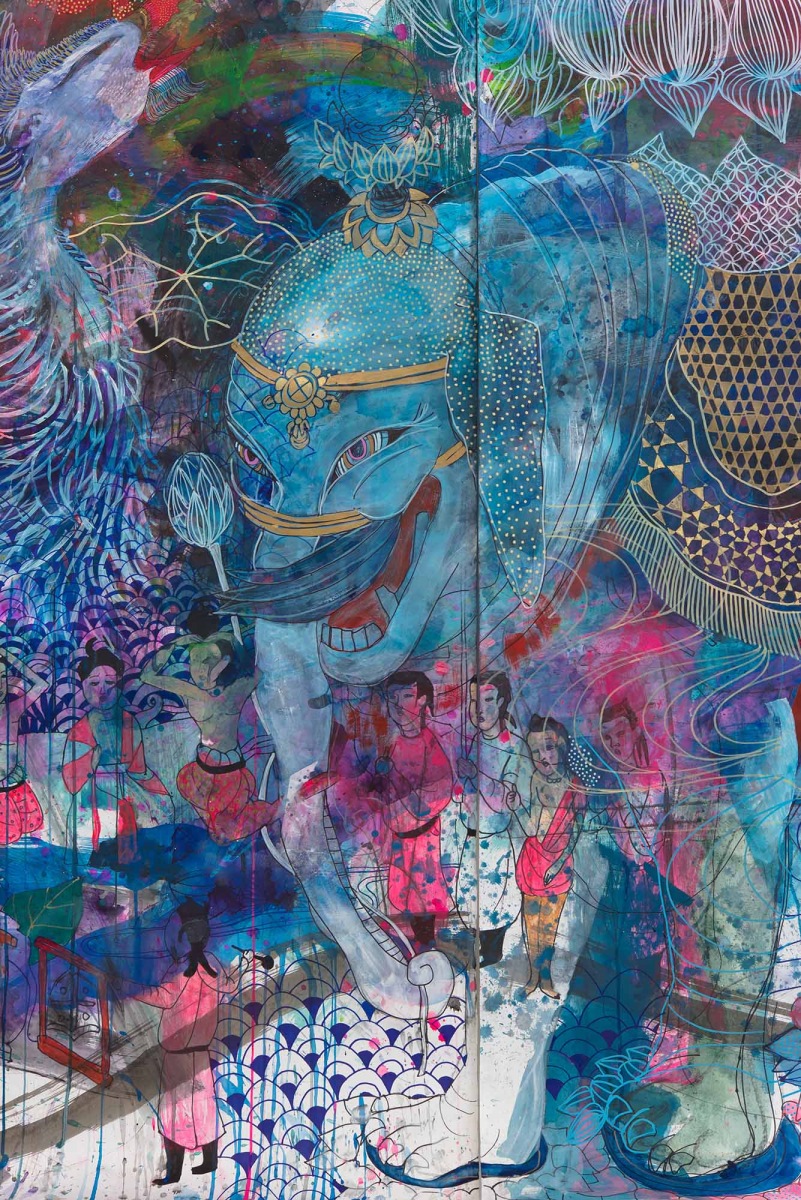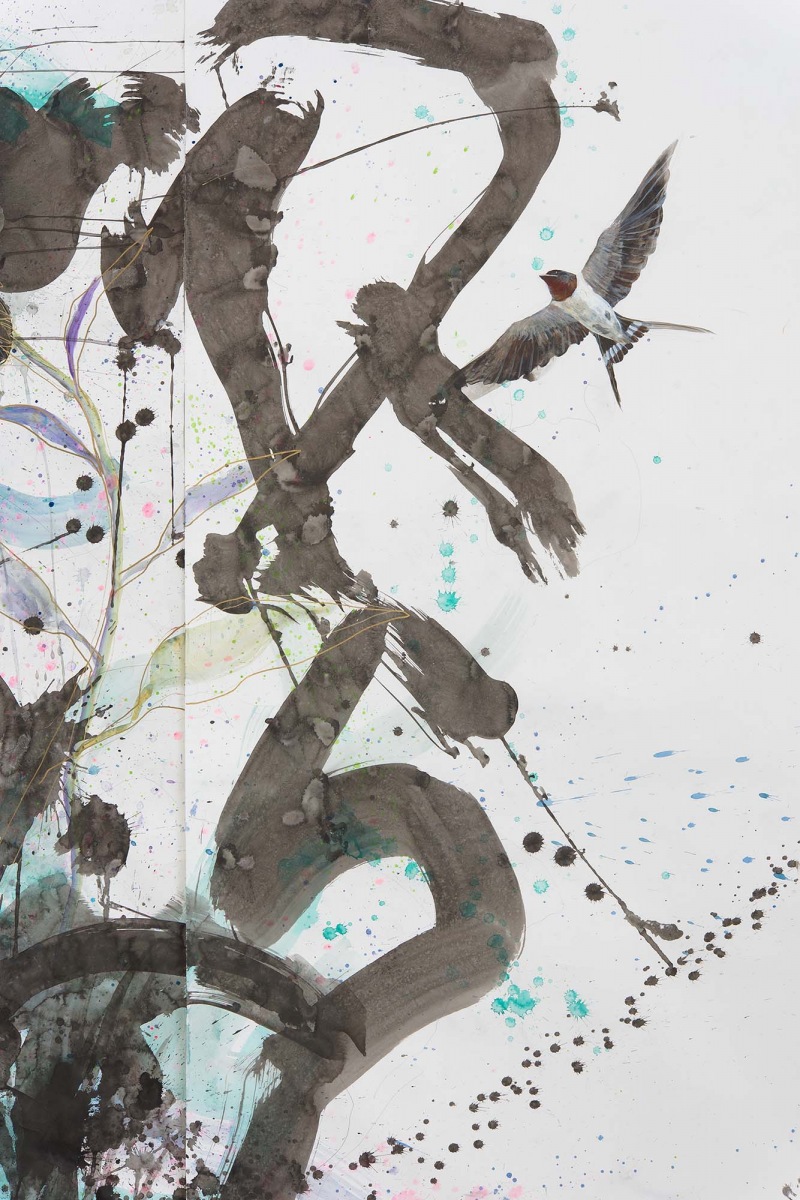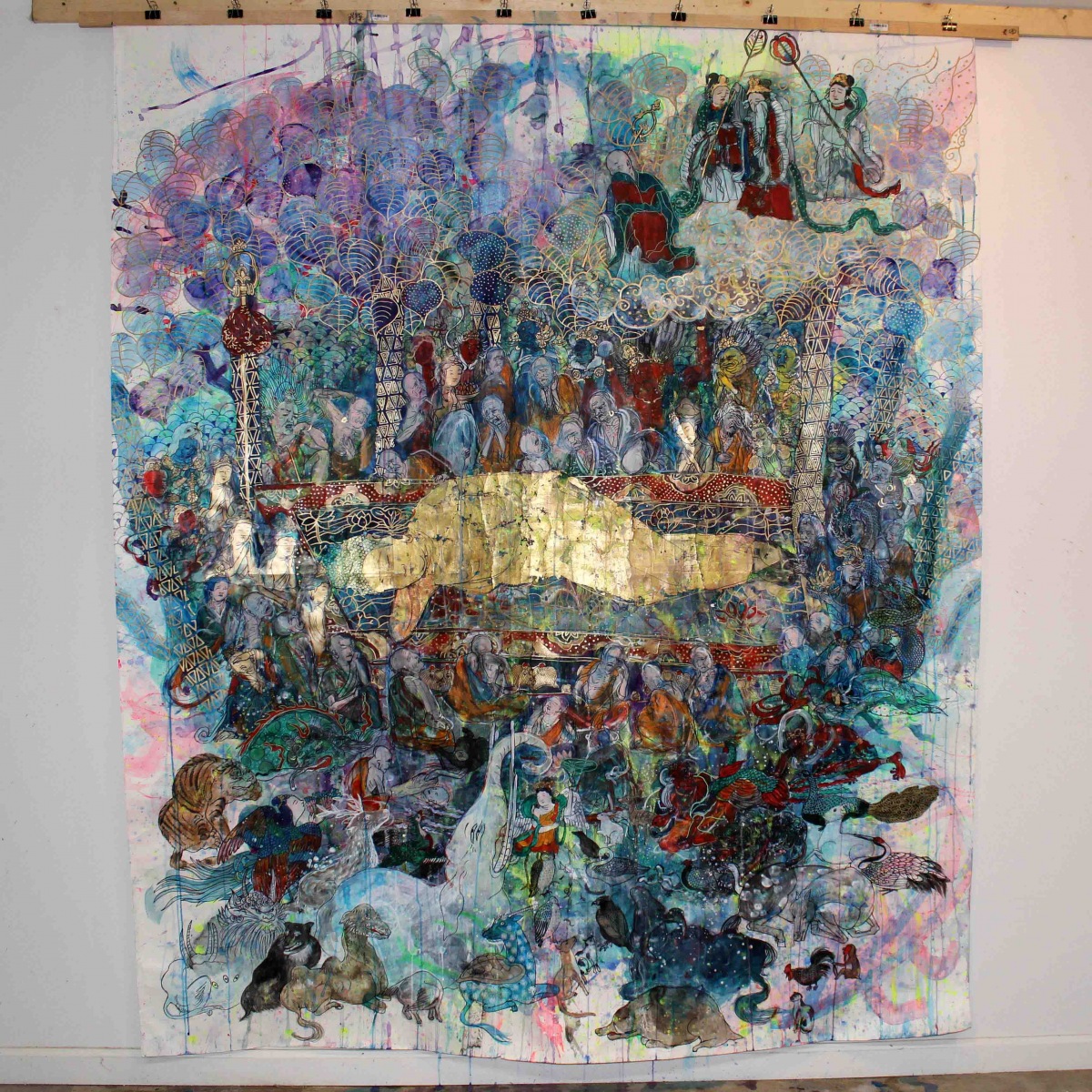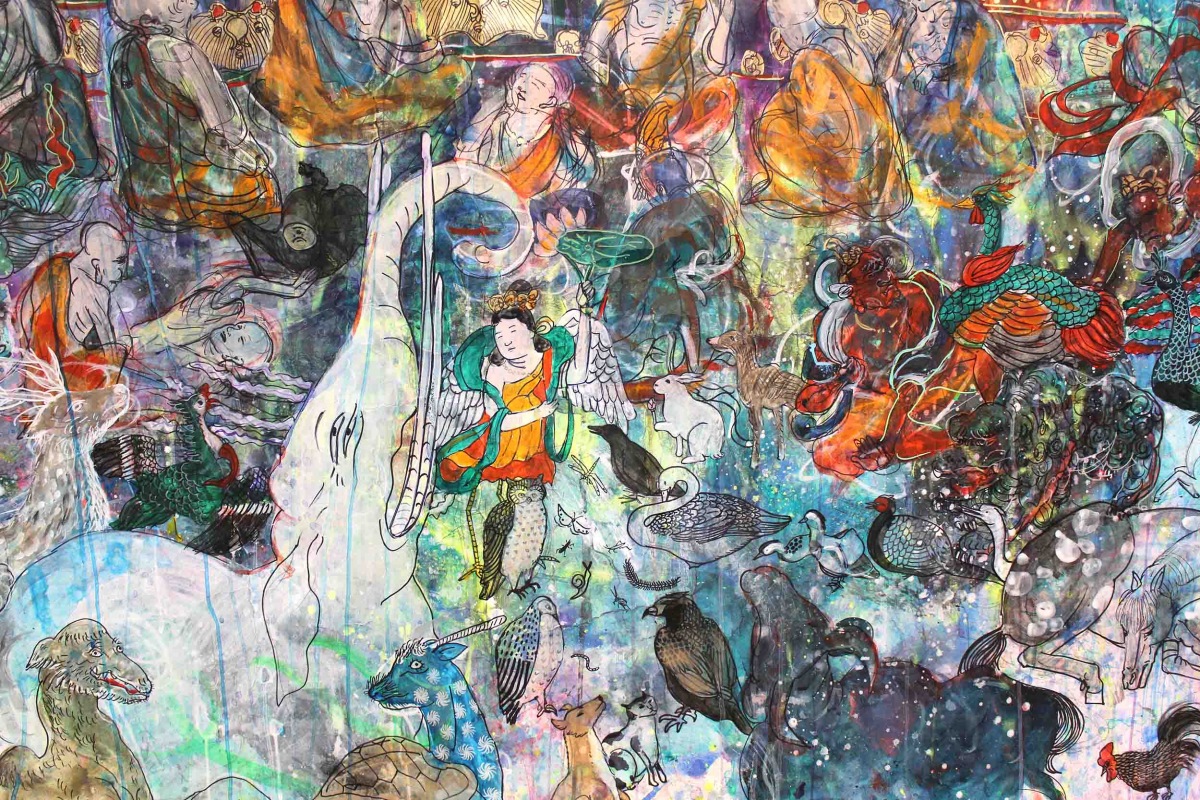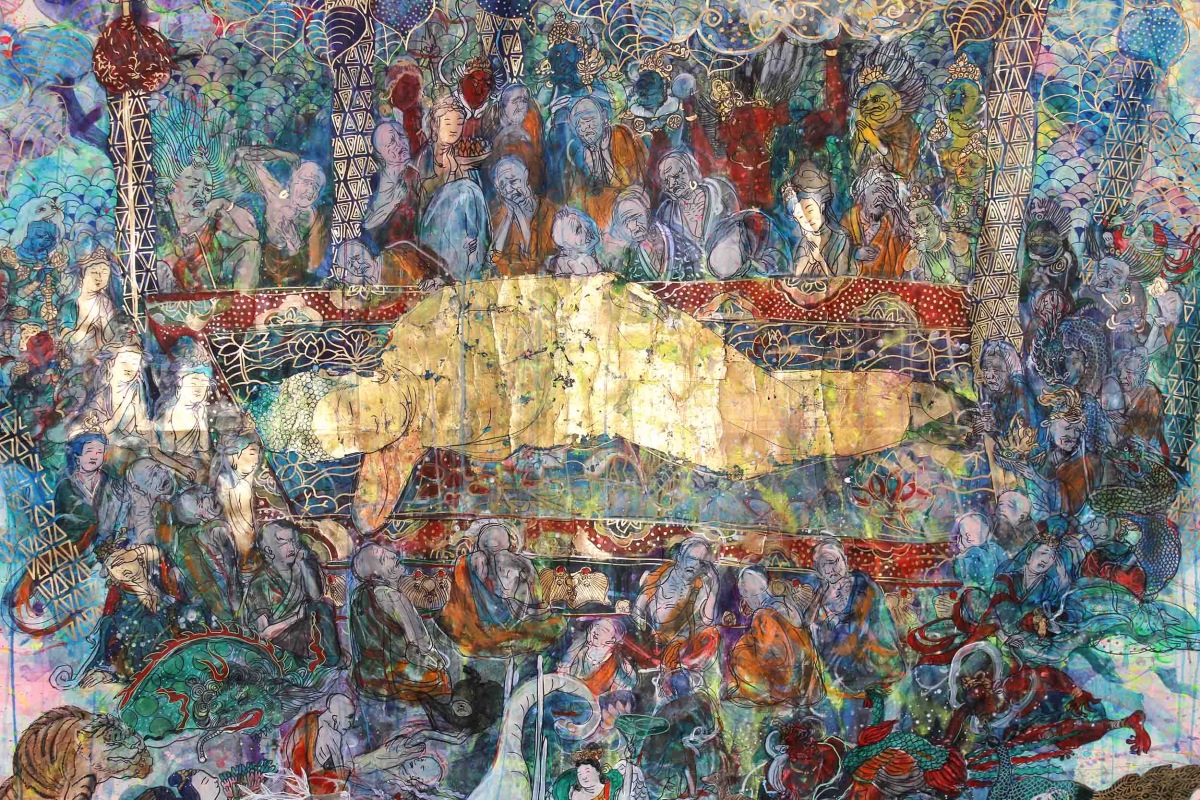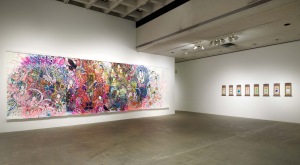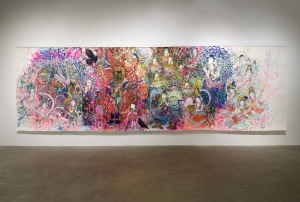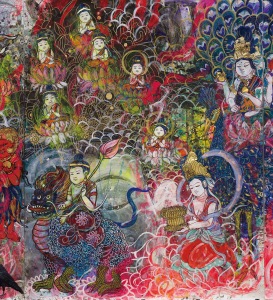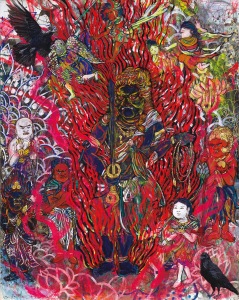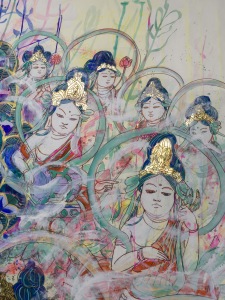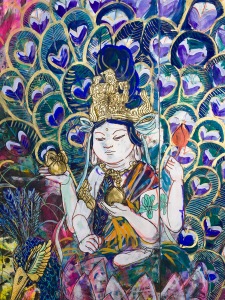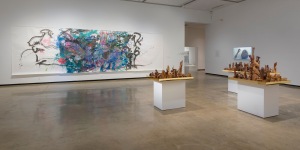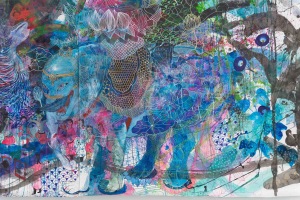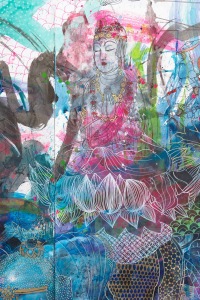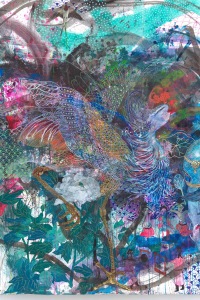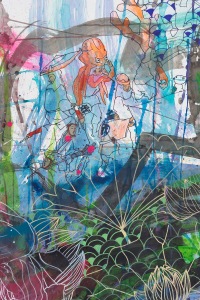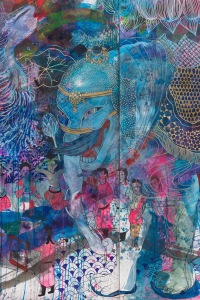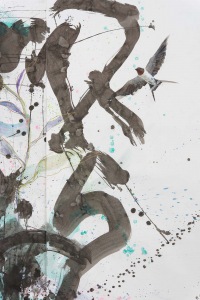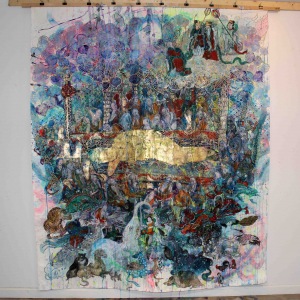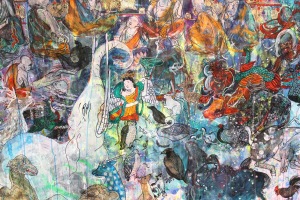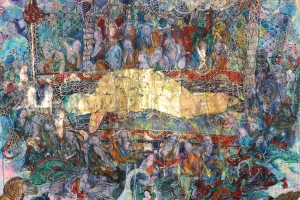Work
BIO
Wakana Kimura is a painter whose subjects are traditional Buddhist Mandala paintings found throughout Japan, of which there are thousands. While Wakana’s large-scale paintings are bold and spectacular, the act of making and reinterpreting a Mandala made only by male priests is a subversive act since, as a woman, she is not allowed to paint Mandala’s with Buddhist iconography. Before beginning her practice of painting her contemporized, graffiti-like Mandala’s, she considered studying the restoration of Japanese Mandala’s, only to be shut out of the field because of her gender. So begins the fascinating journey of Wakana Kimura’s recondite painting practice.
“Out of a swirling mass of black ink brushstrokes appears a fearsome blue figure, with bulging eyes and fangs, wielding a sword in one hand and a rope in the other. This is Fudō Myō-ō, “The Immovable One,” a powerful and beloved deity in Japanese Buddhism. One of the five Kings of Mystical Knowledge and the wrathful counterpart of the Cosmic Buddha, Fudō symbolizes firmness of spirit and the determination to destroy evil.
In this new work, LA Mandala, as in all her Buddhist paintings, Wakana Kimura portrays Fudō according to iconographic conventions but adds her own youthful, dynamic style. Traditionally Fudō is surrounded by a halo of flames. Here Kimura sends flame-like jets of red pigment stabbing outward into the darkness, where they intersect with delicately drawn gold wave patterns, lotuses, and other traditional Japanese motifs. The overall effect is a tornado-like artistic mash-up, both abstract and figural, Western and Eastern, old and new.
In her 2016 painting One trifle-beset night, t’was the moon, not I, that saw the pond lotus bloom (whose title references a poem written by the Japanese Buddhist priest Saigyō [1118–1190] and translated by David McLeod), a Buddhist deity is almost concealed within Kimura’s vividly colored abstraction. At the heart of the four-panel horizontal painting is the bodhisattva Samantabhadra (in Japanese, Fugen) astride an elephant. Fugen is considered by many Buddhists to represent action and practice, while his brother, Manjushri, who rides a lion, represents spiritual insight. Here, amid strong black calligraphic lines and washes of turquoise and lapis pigment, Kimura outlines the details of the elephant, the deity’s robes, and the striations of the lotus petals on his throne with the painstaking precision of ancient Buddhist temple artists. But she covers the creature’s head and legs in tiny dots and embellishes his body with lotus flowers, transforming the elephant and deity into ghostlike elements within an abstract composition.
To create these works, Kimura undergoes a sort of mixed-media meditation. As her ritual tools she uses marker pens and sumi ink, watercolor, vinyl, and acrylic on washi paper. Beginning at the center of the paper and then working outward, she builds up the image layer by layer. “Each mark has its own unique identity,” she explains, “and each mark interacts with another mark in its own unique way. All of the marks together represent an individual conceptual structure.” Her placement of the various motifs and patterns evolves naturally as the image expands outward from the central sheet in a sort of ripple effect. “As with drops of rain in a pond, each drop forms a concentric circle that joins with another concentric circle. Each mark enables communication and creates conversation.”
— Meher McArthur, Power and Pattern: The Dynamic Buddhist Paintings of Wakana Kimura, 2023
Wakana Kimura was born in 1978 in Izu, Shizuika, Japan. She lives and works in Los Angeles and Japan. She received her MFA from Otis College of Art and Design in 2011 and a BFA from Tokyo University of the Arts in 2002. Kimura is the recipient of the 2023 COLA Independent Artist Project, Los Angeles; 2017-2020 Robertson Recreation Center mural from the Department of Cultural Affairs, Los Angeles, and in 2013 received a commission from the Los Angeles Metro, Through the Eyes of the Artist. Museum exhibitions include RSVP Los Angeles: The Project Series at Pomona, Pomona College Museum of Art, Claremont; IMA, Hinokisoken, Museum Meiji-Mura, Aichi, Japan, and Invoke, Udatsu no Kogei Kan Museum, Fukui.
